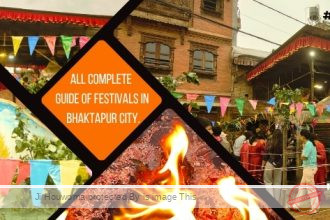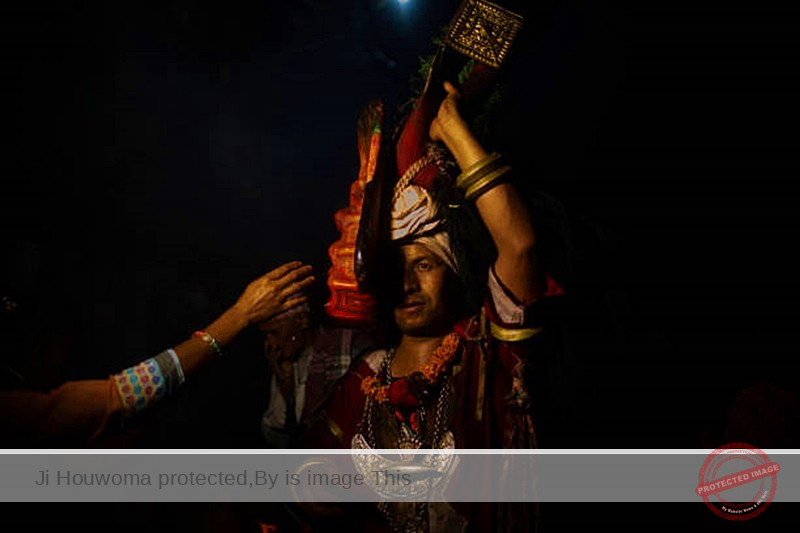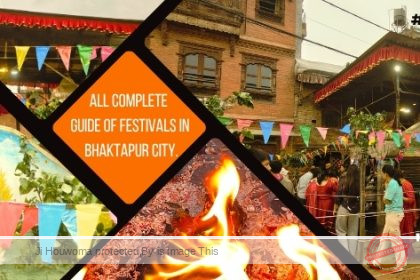The Newar caste is one of the several in Nepal that has its own unique existence, identity, and wealth of art and culture. The Mali community is one of the numerous ethnic groups that make up the Newar community. This caste has its own art tradition and culture.
It has been discovered that this caste is significant, particularly in relation to the Navadurga Naach (Navadurga Pyakhan) event (Dhintal Dyo:). In particular, because they are connected to the worship and pilgrimage of goddesses, the members of this group are also called Malakar (मालाकार), Banamali (वनमाली), Banmala (वनमाला), Gathu (गथु), etc. They are also respectfully referred to as Ubhaju (उभाजूः).

One of the most well-known of the many celebrations held by these Mali villages is the Navadurga Naach (Navadurga Pyakhan-Navadurga Dance). According to legend, several Shakti Peethas from Bhaktapur founded Navadurga Gana while wearing various crowns to signify Goddess Peethas including Bramhayani, Maheshwari, Kaumari, Barahi, Indrayani, and Mahalakshmi. This dance, which is specifically presented by Bhaktapur Banamala Guthi, begins formally on Gathamangal Chaturthi (Gatha Mugh) every year and ends on Bhalbhal Ashtami.
A tantric dance known as Shree Navadurga Bhawani Gana Nritya is performed while reciting mantras using particular body positions and techniques. The person performing this dance is thought to enter the deity after donning the appropriate god’s crown. This dance is held in the highest regard.
An intriguing mythology about the beginning of the Navadurga Naach (Navadurga Pyakhan-Navadurga Dance) states that in the past, Navadurga Bhavani and her Gana were seated in a region named Ikudo with thick forests east of Bhaktapur. There, Navadurga used to dance. When Navadurga Dev Gana encountered a visiting tantric teacher and was about to accept his Bhoga (Sacrifice), the Tantrik prayed to Dev Gana, “O Lord, May I worship the Lord before the Gods take my pleasure.” After the Devgans agreed, the Tantrik used his Tantra knowledge to bind all the Devganas and brought them to his house to worship and dance covertly. The Guru in question married a woman who was not from his caste. Guru gave his wife the keys to every room in the home, but he never gave her the key to the chamber that contained the Dev Gana. When the Dev Gana were traveling east of Bhaktapur, they came across a Pig on the road and devoured it since they were enraged and free of Tantra Vidya’s control (for this reason, pigs are sacrificed to Navadurga Bhavani).
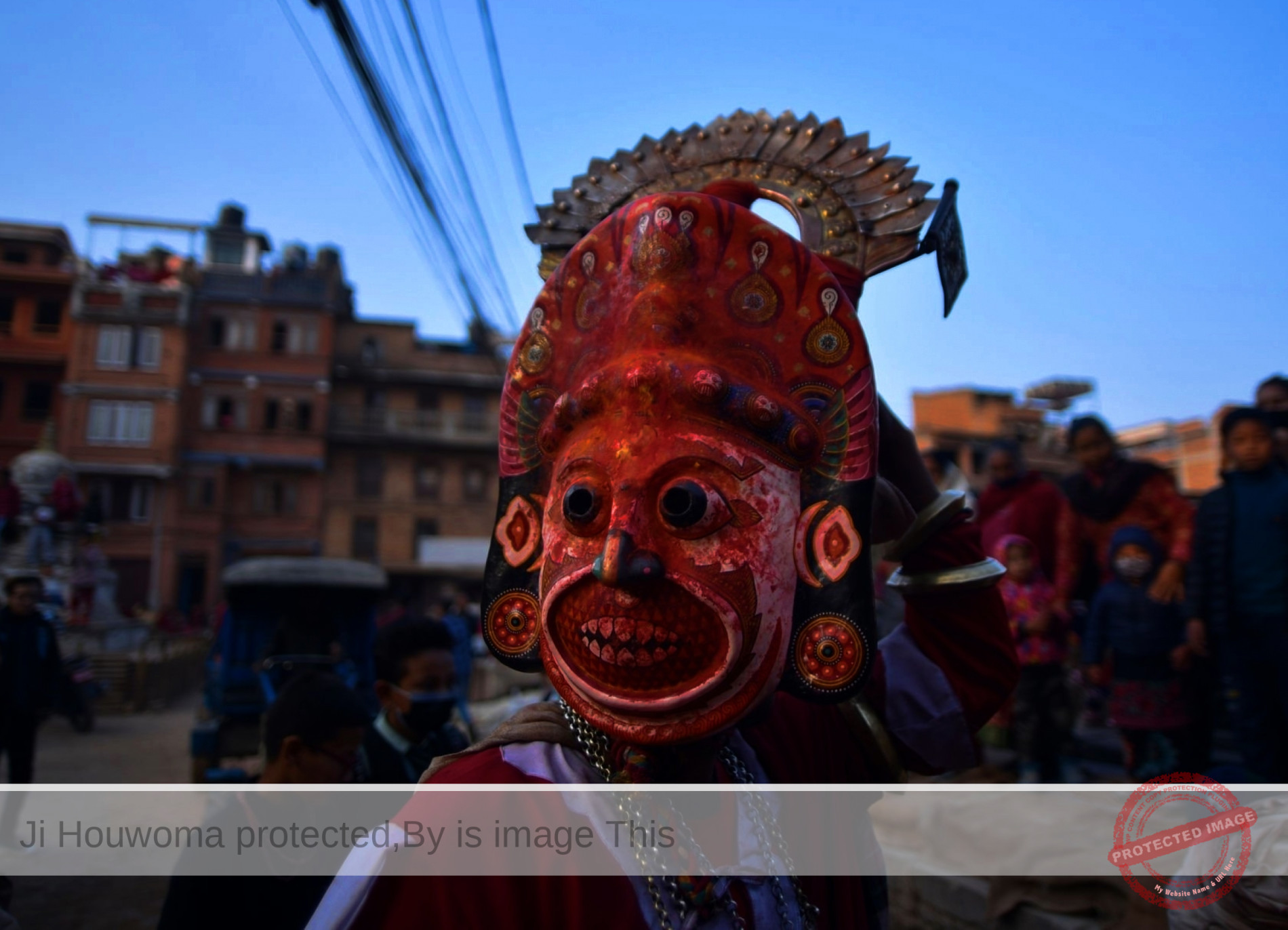
The gardener who had brought flowers to the Guru‘s home for devotion was asked by the Guru whether he wanted to perform the goddess dance after accepting this as well. The gardener agreed to the situation, assembled his family and friends, instructed them to dance out of sight so that no one else could see them, and then began dancing the Ganas of Shree Navadurga Bhavani. As the Gandevas of Navadurga Bhavani are placed in the sokol that holds flowers in this fashion, the phrase that other people shouldn’t touch the gardener’s sokol is still in use today.
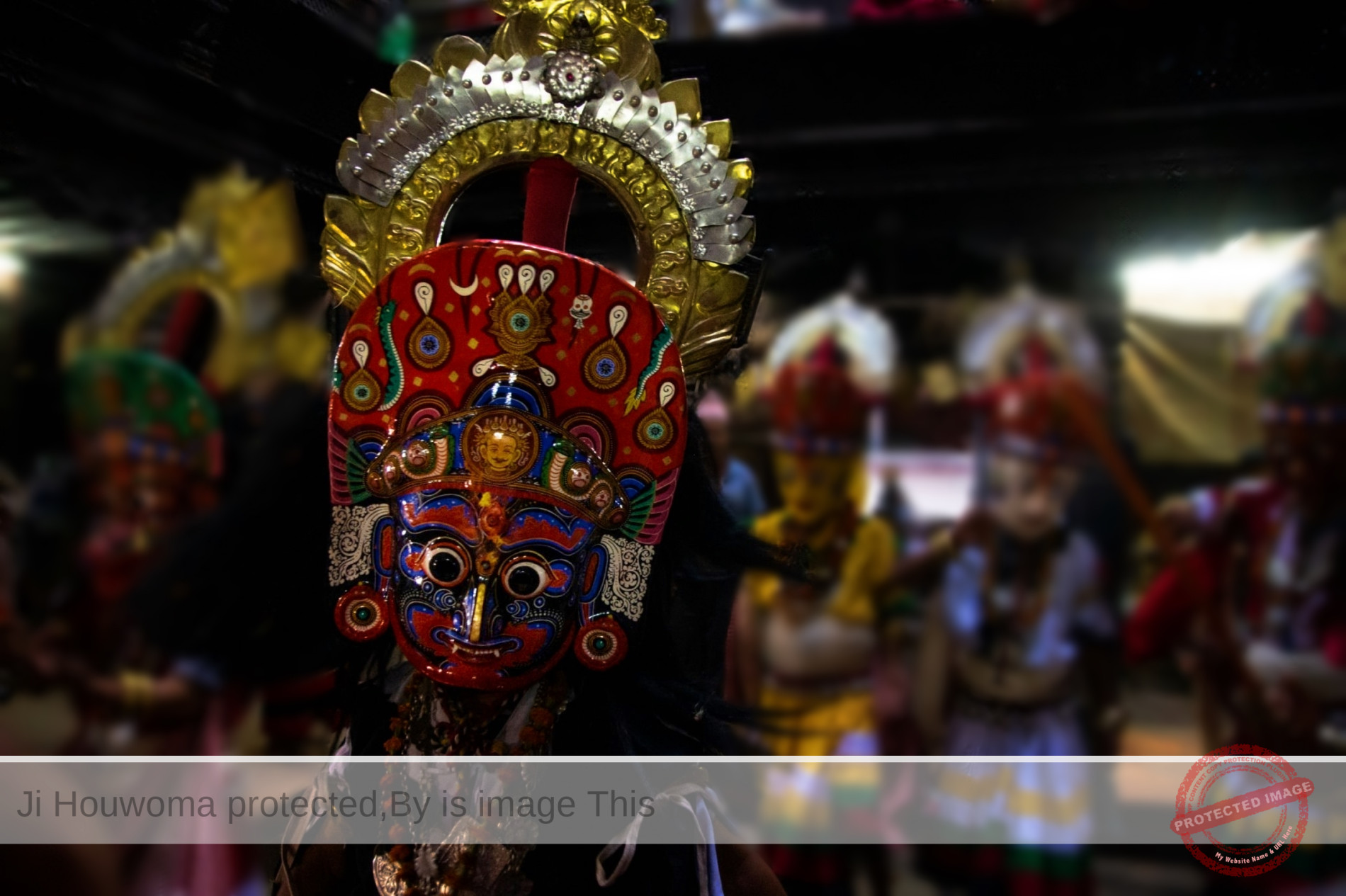
The Gana Nritya of Sree Navadurga Bhavani contains a total of 13 Mask. The mask of Shree Mahadev is not worn by living deities. However, there are 13 living Ganas present when Shree Navadurga Bhavani Nritya is worshiped, including Devanaki, Sifhadya, Patra, Khin, Tan, and Kanya.
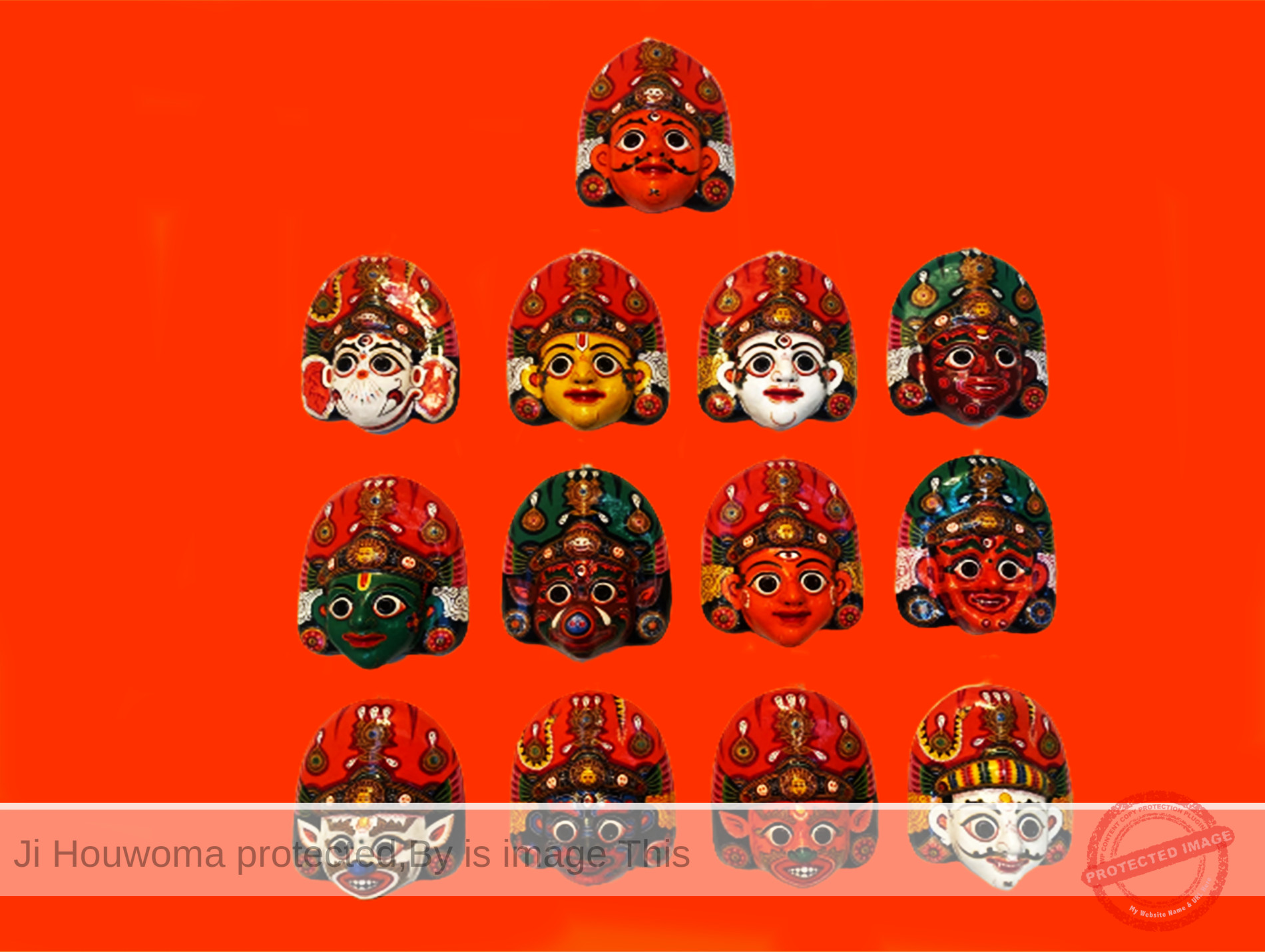
Mask of Navadurga Ganas:
1. Brahmayani
2. Maheshwari
3. Kaumari
4. Baisnavi
5. Indrayani
7. Chamunda (Mahakali)
8. Mahalakshmi
9. Bhairav
10. Ganesha
12. Shihani
13. Brahini

